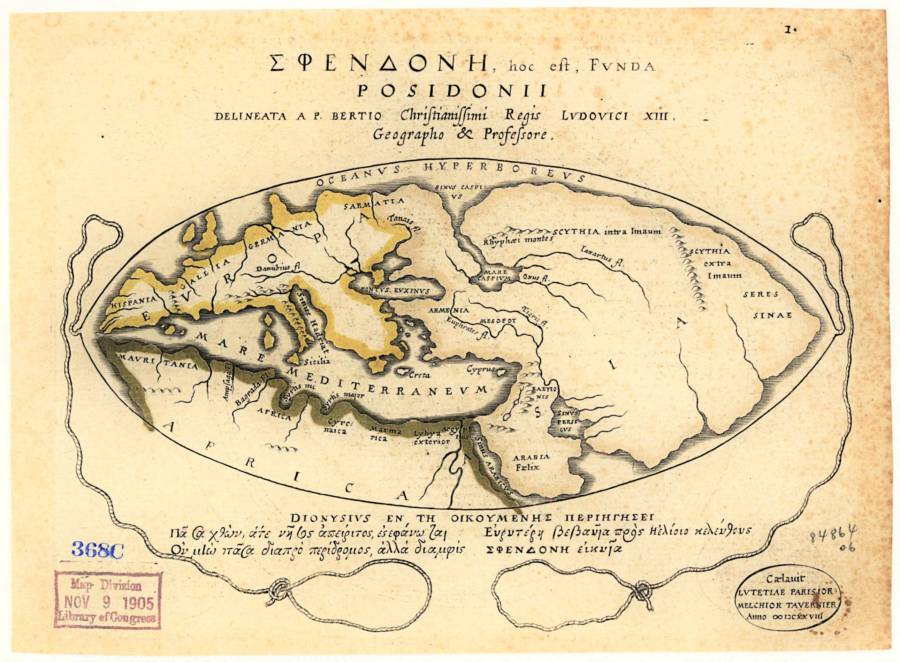
Clairvoyance (/klɛərˈvɔɪəns/; from French clair meaning "clear" and voyance meaning "vision") is the ability to gain information about an object, person, location, or physical event through extrasensory perception.
Any person who is claimed to have such ability is said accordingly to be a clairvoyant (/klɛərˈvɔɪənt/) ("one who sees clearly").
Parapsychology explores this possibility, but the existence of the paranormal is not accepted by the scientific community. Parapsychology, including the study of clairvoyance, is an example of pseudoscience.

Pertaining to the ability of clear-sightedness, clairvoyance refers to the paranormal ability to see persons and events that are distant in time or space.

It can be divided into roughly three classes: precognition, the ability to perceive or predict future events, retrocognition, the ability to see past events, and remote viewing, the perception of contemporary events happening outside of the range of normal perception.

A number of Christian saints were said to be able to see or know things that were far removed from their immediate sensory perception as a kind of gift from God, including Columba of Iona, Padre Pio and Anne Catherine Emmerich.
Jesus Christ in the Gospels is also recorded as being able to know things that were far removed from his immediate human perception.

In other religions, similar stories of certain individuals being able to see things far removed from their immediate sensory perception are commonplace, especially within pagan religions where oracles were used. Prophecy often involved some degree of clairvoyance, especially when future events were predicted.

In most of these cases, however, the ability to see things was attributed to a higher power and not thought of as an ability that lay within the person himself.

In Jainism, clairvoyance is regarded as one of the five kinds of knowledge. The beings of hell and heaven (devas) are said to possess clairvoyance by birth.

According to Jain text Sarvārthasiddhi, "this kind of knowledge has been called avadhi as it ascertains matter in downward range or knows objects within limits".

Would go into trance and undergo a personality change, becoming fluent and articulate, and giving diagnosis and prescription for his own disease as well as those of others.

Clairvoyance was a reported ability of some mediums during the spiritualist period of the late 19th and early 20th centuries, and psychics of many descriptions have claimed clairvoyant ability up to the present day.

Remote viewing, also known as remote sensing, remote perception, telesthesia and travelling clairvoyance is the alleged paranormal ability to perceive a remote or hidden target without support of the senses.

Remote viewing (RV) is the practice of seeking impressions about a distant or unseen target, purportedly using extrasensory perception (ESP) or "sensing" with the mind.

Typically a remote viewer is expected to give information about an object, event, person or location that is hidden from physical view and separated at some distance.

Remote viewing was popularized in the 1990's upon the declassification of certain documents related to the Stargate Project, a $20 million research program that had started in 1975 and was sponsored by the U.S. government, in an attempt to determine any potential military application of psychic phenomena.

In early occult and spiritualist literature, remote viewing was known as telesthesia and travelling clairvoyance. Rosemary Guiley described it as "seeing remote or hidden objects clairvoyantly with the inner eye, or in alleged out-of-body travel."

The emergence of what is termed "New Age" thinking and the popularity of the Human Potential Movement provoked a mini-renaissance that renewed public interest in consciousness studies and psychic phenomena and helped to make financial support more available for research into such topics.

Stargate Project work primarily involved remote viewing, the purported ability to psychically "see" events, sites, or information from a great distance. The project was overseen until 1987 by Lt. Frederick Holmes "Skip" Atwater, an aide and "psychic headhunter" to Maj. Gen. Albert Stubblebine, and later president of the Monroe Institute. The unit was small-scale, comprising about 15 to 20 individuals, and was run out of "an old, leaky wooden barracks".

The Stargate Project was terminated and declassified in 1995 after a CIA report concluded that it was never useful in any intelligence operation. Information provided by the program was vague and included irrelevant and erroneous data, and there was reason to suspect that its project managers had changed the reports so they would fit background cues. The program was featured in the 2004 book and 2009 film, both titled The Men Who Stare at Goats although neither mentions it by name.

An altered state of consciousness (ASC), also called altered state of mind or mind alteration, is any condition which is significantly different from a normal waking state. By 1892, the expression was in use in relation to hypnosis although an ongoing debate about hypnosis as an ASC based on modern definition exists.

Transpersonal psychology is a sub-field or school of psychology that integrates the spiritual and transcendent aspects of the human experience with the framework of modern psychology. It is also possible to define it as a "spiritual psychology".

The transpersonal is defined as "experiences in which the sense of identity or self extends beyond (trans) the individual or personal to encompass wider aspects of humankind, life, psyche or cosmos".

It has also been defined as "development beyond conventional, personal or individual levels".

Issues considered in transpersonal psychology include spiritual self-development, self beyond the ego, peak experiences, mystical experiences, systemic trance, spiritual crises, spiritual evolution, religious conversion, altered states of consciousness, spiritual practices, and other sublime and/or unusually expanded experiences of living.

The discipline attempts to describe and integrate spiritual experience within modern psychological theory and to formulate new theory to encompass such experience.

Transpersonal Psychology is concerned with the study of humanity's highest potential, and with the recognition, understanding, and realization of unitive, spiritual, and transcendent states of consciousness.

These phenomena include the causes, effects and correlates of transpersonal experiences and development, as well as the disciplines and practices inspired by them. They have also criticized many definitions of transpersonal psychology for carrying implicit assumptions, or presuppositions, that may not necessarily define the field as a whole.

There is no general definition of an altered state of consciousness, as any definitional attempt would firstly have to rely on a definition of a normal state of consciousness. Attempts to define the term can however be found in Philosophy, Psychology and Neuroscience. There is no final consensus what the most accurate definition for what purpose is.
"An altered state is any mental state(s), induced by various physiological, psychological, or pharmacological maneuvers or agents, which can be recognized subjectively by the individual themselfves (or by an objective observer of the individual) as representing a sufficient deviation in subjective experience of psychological functioning from certain general norms for that individual during alert, waking consciousness."

"An altered state of consciousness (ASC) may be defined as a temporary change in the overall pattern of subjective experience, such that the individual believes that his or her mental functioning is distinctly different from certain general norms for his or her normal waking state of consciousness". Farthing (1992, p. 205)

As a working definition for neuroscientific research, it might suffice to presume that most people have a strong intuition concerning which variability in their everyday wakeful state feels normal to them. This variability of experience is considered as normal fluctuation, while any state that is experienced to diverge significantly from it can be called an ASC.

From an experimental perspective, it is also reasonable to compare ASC conditions to a baseline state – a state subjectively judged as average, or normal. The comparison with a 'normal' baseline requires that the ASC under investigation is of relatively short duration (minutes to hours), which differentiates ASCs from most pathological conditions.

Importantly, it has been emphasized that an ASC is not a mere quantitative change in a single cognitive function (e.g. elevated arousal). Instead, it is a multidimensional phenomenon.

Thereby, the relative intensity of multiple consciousness aspects constitutes a 'phenomenological pattern' characterizing a particular state. Such 'patterns' have also been referred to as relative changes in the '(basic) dimensions of consciousness'.

Altered states of consciousness might have been employed by humans as early as 30,000 years ago. Mind-altering plants and/or excessive dancing were used to attain an ecstatic or mystic state.

Examples of early religious use of altered states of consciousness are the rites of Dionysos and the Eleusinian Mysteries, as well as Yoga and Meditation.

Meditation in its various forms is being rediscovered by modern psychology because of its therapeutic potential and its ability to "enable the activity of the mind to settle down". In Psychotherapy techniques like hypnosis, meditation, support psychological processes.

Due to the behaviourist paradigm in psychology altered states of consciousness were dismissed as a field of scientific inquiry during the early 20th century. They were pathologized and merely seen as symptoms of intoxication or demonic possession.

The findings of the famous Good Friday Experiment by Pahnke suggest that mystical experiences can be triggered by psilocybin.

A classification with five categories was suggested by Vaitl to distinguish ASCs according to how they were induced:
- Spontaneous (day-dreaming and near death experience)
- Physical and physiological (fasting and sex)
- Psychological (music, meditation, hypnosis)
- Pathological (Epilepsy, brain damage)
- Pharmacological (psychoactive substances)

Vaitl further suggests four basic aspects of experiences: (1) activation (2) awareness span (3) self-awareness (4) sensory dynamics.

Three basic dimensions, which were termed: (1) oceanic boundlessness (2) dread of ego dissolution (3) visionary restructuralization.

Four different "modes of consciousness": (1) the waking mode (2) the deep sleep mode (3) the REM sleep / dreaming mode (4) the integrative mode.

Altered states of consciousness may also be induced by:
- Meditation
- Spiritual experience
- Learning
- Insight
- Understanding
- Emotional development
- Sensitivity training
- Mental development
- Recreational
\

Those with personal experience of conditions such as Depersonalisation often cite the opposite, that it is an increased awareness of the environment and the self that results in altered states of consciousness.

When the reduction of self-awareness and environmental awareness take effect, they produce altered states of consciousness.

The first condition, traumatic experience, is defined as a lesion caused by an external force (Trauma. (n.d.) In Merriam-Webster Dictionary online, 2013). Examples include impact to the brain caused by blunt force (i.e., a car accident). The reason a traumatic experience causes altered states of consciousness is that it changes how the brain works.

The external impact diverts the blood flow from the front of the brain to other areas. The front of the brain is known as the prefrontal cortex responsible for analytical thought (Kunsman, 2012). When the damage becomes uncontrollable, the patient experiences changes in behavior and impaired self-awareness. This is exactly when an ASC is experienced.

Another common cause is epilepsy. According to Medlineplus epilepsy can be described as a brain disorder that causes seizures (2013). During the seizure it is said that the patient will experience hallucinations and loss of mental control causing temporary dissociation from reality.

This not only altered the patient's behavioural pattern but also made them dissociate from reality during that particular time frame.

Hemi-Sync is a trademarked brand name for a patented process used to create audio patterns containing binaural beats, which are commercialized in the form of audio CDs. Interstate Industries Inc., created by Hemi-Sync founder Robert Monroe, is the owner of the Hemi-Sync technology.

Hemi-Sync is short for Hemispheric Synchronization, also known as brainwave synchronization. Monroe indicated that the technique synchronizes the two hemispheres of one's brain, thereby creating a 'frequency-following response' designed to evoke certain effects.

Hemi-Sync has been used for many purposes, including relaxation and sleep induction, learning and memory aids, helping those with physical and mental difficulties, and reaching altered states of consciousness through the use of sound.

The technique involves using sound waves to entrain brain waves. Wearing headphones, Monroe claimed that brains respond by producing a third sound (called binaural beats) that encouraged various brainwave activity changes.

The basis for the entrainment effects is electromagnetic rather than acoustical. Replicated, double-blind, randomized trials on anesthetized patients have found Hemi-Sync effective as a partial replacement for fentanyl during surgery. A similar study found it ineffective at replacing propofol however.

Brainwave entrainment, also referred to as brainwave synchronization and neural entrainment, refers to the hypothesized capacity of the brain to naturally synchronize its brainwave frequencies with the rhythm of periodic external stimuli, most commonly auditory, visual, or tactile.

It is believed that patterns of neural firing, measured in Hz, correspond with states of alertness such as focused attention, deep sleep, etc. It is hypothesized that by listening to these beats of certain frequencies one can induce a desired state of consciousness that corresponds with specific neural activity, such as studying, sleeping, exercising, meditating, doing creative work, and so on.

Neural oscillations are rhythmic or repetitive electrochemical activity in the brain and central nervous system. Such oscillations can be characterized by their frequency, amplitude and phase.

Neural tissue can generate oscillatory activity driven by mechanisms within individual neurons, as well as by interactions between them. They may also adjust frequency to synchronize with the periodic vibration of external acoustic or visual stimuli.

The activity of neurons generate electric currents; and the synchronous action of neural ensembles in the cerebral cortex, comprising large numbers of neurons, produce macroscopic oscillations. These phenomena can be monitored and graphically documented by an electroencephalogram (EEG). The electroencephalographic representations of those oscillations are typically denoted by the term 'brainwaves' in common parlance.

The technique of recording neural electrical activity within the brain from electrochemical readings taken from the scalp originated with the experiments of Richard Caton in 1875, whose findings were developed into electroencephalography (EEG) by Hans Berger in the late 1920's.

The functional role of neural oscillations is still not fully understood; however they have been shown to correlate with emotional responses, motor control, and a number of cognitive functions including information transfer, perception, and memory.

Specifically, neural oscillations, in particular theta activity, are extensively linked to memory function, and coupling between theta and gamma activity is considered to be vital for memory functions, including episodic memory.

Entrainment is a concept first identified by the Dutch physicist Christiaan Huygens in 1665 who discovered the phenomenon during an experiment with pendulum clocks: He set them each in motion and found that when he returned the next day, the sway of their pendulums had all synchronized.

Such entrainment occurs because small amounts of energy are transferred between the two systems when they are out of phase in such a way as to produce negative feedback. As they assume a more stable phase relationship, the amount of energy gradually reduces to zero, with systems of greater frequency slowing down, and the other speeding up.

Subsequently, the term 'entrainment' has been used to describe a shared tendency of many physical and biological systems to synchronize their periodicity and rhythm through interaction.
This tendency has been identified as specifically pertinent to the study of sound and music generally, and acoustic rhythms specifically. The most ubiquitous and familiar examples of neuromotor entrainment to acoustic stimuli is observable in spontaneous foot or finger tapping to the rhythmic beat of a song.

- https://www.ncbi.nlm.nih.gov/pmc/articles/PMC5980979/
- https://patents.google.com/patent/US20170065229A1/en
- https://www.pnas.org/content/111/41/14935

A well-known example of macroscopic neural oscillations is alpha activity. Alpha waves are neural oscillations in the frequency range of 8–12 Hz arising from the synchronous and coherent (in phase or constructive) electrical activity of thalamic pacemaker cells in humans. They are also called Berger's waves after the founder of EEG.

Alpha waves are reduced with open eyes, drowsiness and sleep. Historically, they were thought to represent the activity of the visual cortex in an idle state. More recent papers have argued that they inhibit areas of the cortex not in use, or alternatively that they play an active role in network coordination and communication.

Alpha waves were discovered by German neurologist Hans Berger, the inventor of the EEG itself. Alpha waves were among the first waves documented by Berger, along with beta waves, and he displayed an interest in "alpha blockage", the process by which alpha waves decrease and beta waves increase upon a subject opening their eyes. This distinction earned the alpha wave the alternate title of "Berger's Wave".

The term "energy" is used by writers and practitioners of various esoteric forms of spirituality and alternative medicine to refer to a variety of claimed experiences and phenomena that defy measurement and thus can be distinguished from the scientific form of energy.

central theme became "the search for the correlation between objective activity in the brain and subjective psychic phenomena".

Concepts such as "life force" and "élan vital" existed from antiquity and emerged from the debate over vitalism in the 18th and 19th centuries with Mesmer and the magnetism. They continued to be discussed in the 20th century by some thinkers and practitioners in the modern New Age movement.

It is not the scientific concept of energy that is being referred to in the context of spirituality and alternative medicine.

That's all that energy is: a measurement of work capability. But in popular culture, 'energy' has somehow become a noun. "Energy" is often spoken of as if it is a thing unto itself, like a region of glowing power, that can be contained and used.

Remember, energy itself is not the thing being measured: energy is the measurement of work performed or of potential.

Thus, this New Age concept of the body having an "energy field" is fatally doomed. There is no such thing as an energy field; they are two unrelated concepts.

Despite the lack of scientific support, spiritual writers and thinkers have maintained ideas about energy and continue to promote them either as useful allegories or as fact. The field of energy medicine purports to manipulate energy, but there is no credible evidence to support this.

No comments:
Post a Comment